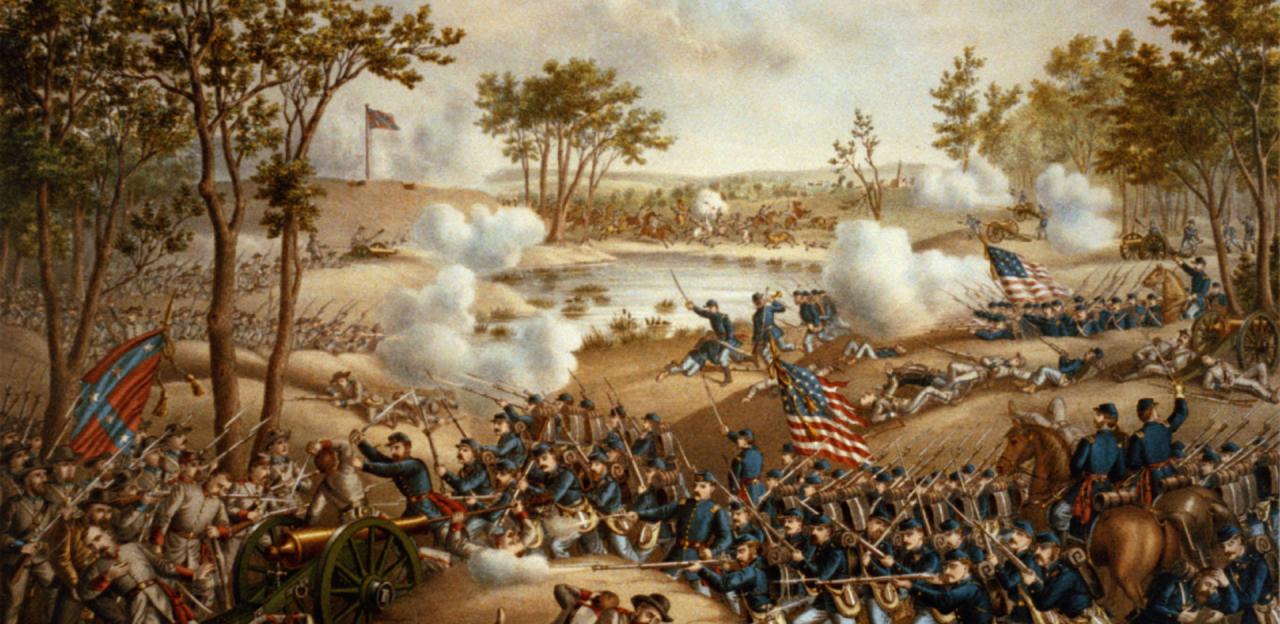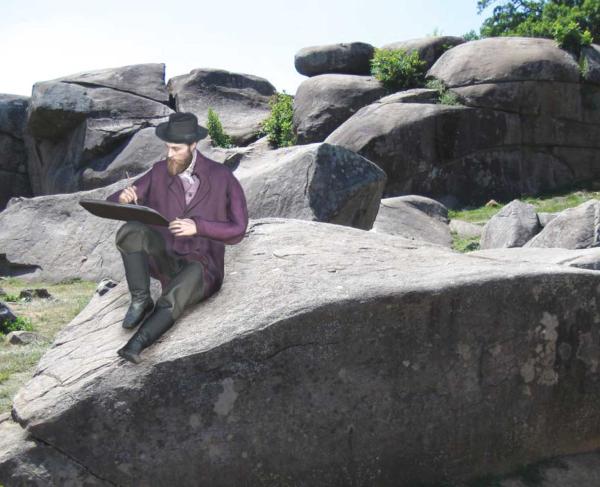June 1st, Cold Harbor Evening

Dust raised by the tramping feet of soldiers “filled the air and hung the leaves of trees like snow” recalled George Stevens of the 77th New York Infantry. Stevens’s regiment was part of Maj. Gen. Horatio Wright’s VI Corps and on the morning of June 1, 1864, was headed toward Old Cold Harbor, a crossroads northeast of Richmond. Dispatched the night before by General-in-Chief Ulysses S. Grant and army commander George Meade, Wright set out to relieve Maj. Gen. Philip Sheridan’s cavalry which had captured the intersection the day before. Cold Harbor was enormously important to the Federals. One the roads which passed through it led to their supply base on the Pamunkey River.
Cold Harbor had also caught the eye of Robert E. Lee. The presence of enemy cavalry in the vicinity on May 30 had prompted him to begin shifting cavalry and infantry to the area. Control of the junction was crucial for Lee as another road ran directly to the Confederate capital. When an infantry assault failed to dislodge Sheridan early on the first day of June, the gray infantry formed a new position to the west. Brigadier General Robert Hoke’s division occupied ground below and extending just to north of the Cold Harbor Road. Brigadier General Joseph Kershaw’s division of Maj. Gen. Richard Anderson’s First Corps stood on Hoke’s left flank.
About 10 a.m., the lead elements of the VI Corps arrived. Wright’s orders directed him to launch an attack, however, it would take several hours before he could deploy his three divisions. Then around 3 p.m., Maj. Gen. William “Baldy” Smith’s XVIII Corps arrived. Dispatched from the Army of the James, Smith’s infantry was to reinforce the Army of the Potomac, only to be rerouted to assist in the effort to secure Cold Harbor. Throughout the day, as the Federals prepared for the assault, Anderson’s and Hoke’s men constructed earthworks and felled trees in front of their lines to act as obstacles.
At 6 p.m. Smith and Wright stepped off. Only two of Smith’s three divisions participated in the attack. Brigadier General John Martindale held Smith’s right above Beulah Church and was directed to guard a gap between the XVIII Corps and the V Corps. On Martindale’s left, Brig. Gen. William T.H. Brooks’ men lurched forward. “The entire brigade was ordered forward in line of battle through the woods to the open plain in front” recalled Col. Guy Henry, one of Brooks’ brigade commanders. “Charging across this field to a thickly wooded ravine and up a slight ascent, my brigade drove the enemy from several small detached works to their first line of rifle-pits, and followed them over these through the thicket to the open space beyond, where they were very strongly intrenched behind works which my brigade was unable to carry.” Henry, along with the brigade of Col. Hiram Burnham ran into stiff resistance from Brig. Gen. Benjamin Humphreys’ Mississippians from Kershaw’s division.
Brigadier General Charles Devens’s XVIII Corps division advanced on Brooks’ left. Despite sustaining a “destructive fire” Col. Jeremiah Drake’s brigade moved forward across an open field toward Brig. Gen. William Wofford’s Georgians. His men managed to drive the Confederates from the first line of works, but could not take the second. Joined by regiments from Col. William Barton’s brigade, the Union soldiers renewed their advance. Soldiers from a VI Corps division led by Brig. Gen. James Ricketts added even more weight to the assault. Unable to hold on, the Georgians cracked and ran for the rear, opening a gap in the Confederate line. Wofford’s collapse also forced the retreat of two regiments in the Brig. Gen. Goode Bryan’s brigade on his left. Blue infantry pushed through the breach.
Ricketts had advanced through a ravine cut by a stream known as Bloody Run which separated Wofford and Brig. Gen. Thomas Clingman’s North Carolinians of Hoke’s division. “A brilliant advance was made, and notwithstanding the difficulties encountered in a dense thicket and swamp, the rifle-pits and [e]ntrenchments of the enemy were captured” wrote one of Ricketts’ officers. Colonel William Truex’s brigade, along with men from Col. Benjamin Smith’s brigade, had struck Clingman, driving off the 8th and 51st North Carolinian regiments. Into the opening rushed part of the 2nd Connecticut Heavy Artillery. A soldier in the 121st New York who saw the attack described how the Connecticut men advanced on Treux’s left, pushed into the breach and forced the Tarheels to abandon their line even as they fell in droves. Confederate reinforcements, however, were close at hand
To the north, “in a good deal of excitement” Kershaw ordered the 2nd South Carolina and 3rd South Carolina Battalion from Col. John Hennagan’s brigade into the fight. “I hurried to the point indicated,” wrote the Second’s Col. William Wallace, “found that our troops to the extent of a brigade and a half had been driven from their works, and the enemy in possession of them. I determined to charge, however, and succeeded in driving them from their position.” On Hoke’s front, Col. Alfred Colquitt, sent part of the 23rd, 27th ,and the entire 28th Georgia to aid Clingman. Joining the remainder of Clingman’s brigade, the Georgians managed to regain some of the ground lost earlier in the fight.
Firing continued until well after dark. In some places, the opposing sides were separated by no more than fifty yards. South of the Cold Harbor Road, Hoke had managed to turn back the rest of Russell’s brigades, along with Brig. Gen. Thomas Neill’s VI Corps division. This lack of progress did not dampen Grant and Meade’s spirits. Emboldened by the success of Devens, Ricketts and Upton, they determined to shift additional infantry to Cold Harbor. Grant decided not to renew fighting the next day, but planned for a larger assault to take place on the morning of June 3.
By the end of November, we must come up with $501,000 to make our next payment and purchase an additional 1.2-acre tract at Gaines’ Mill Cold Harbor...


